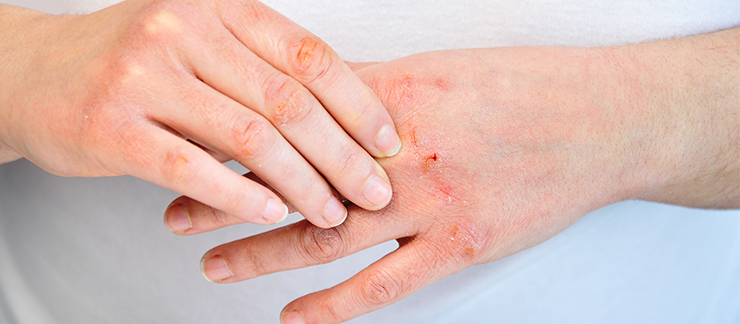
Managing Shingles in the Elderly
Remember the painful, irritating itch of chickenpox as a child? Unfortunately, one of three American adults will experience a second outbreak of the same virus in their lifetimes. When this infection returns, it’s called “shingles.”
The elderly, who are at particular risk for contracting shingles, should be closely monitored by a caregiver if an outbreak occurs. If left untreated, shingles side effects could become serious.
What are Shingles?
Shingles is a viral infection initiated by the varicella-zoster virus, which causes chickenpox. After a successful recovery from chickenpox, the virus lies dormant in the human nervous system for the rest of one’s life. It can reactivate and inflame a specific section of the nerves in the body. Any adult that has had chickenpox is at risk of developing shingles.
Symptoms of shingles include the following:
- A rash in a single stripe on one side of the body or face
- Fluid-filled blisters along the rash
- Fever
- Headache
- Chills
- Upset stomach
Shingles symptoms usually last about two to four weeks in total. Pain, numbness or itching will start to affect a specific part of the skin. After roughly two weeks, a red, blotchy rash appears with fluid-filled blisters. In seven to 10 days, the blisters begin to dry up and form a crust. The rash will then slowly disappear.
While it isn’t known exactly what causes an outbreak, shingles are linked to a weakened immune system. Therefore, the elderly are at higher risk for shingles, which is more severe in older adults than in the young.
Shingles in the Elderly
For those who are 60 or older, shingles is more dangerous, and the risk increases with age. Anyone taking drugs to support chemotherapy or after an organ transplant is at a higher risk of developing or resisting shingles. On rare occasions, shingles can lead to pneumonia, hearing problems, difficulty with balance, or blindness.
The most common complication of shingles is long-term nerve pain called postherpetic neuralgia (PHN). The pain continues in the areas where the shingles rash occurred, long after the rash is gone. According to the Centers for Disease Control and Prevention (CDC), about 10 to 18% of people with shingles will also experience PHN, and the risk increases with age.
Nerve pain can continue for months or even years after an episode of shingles. The pain can be so severe and debilitating, a doctor may need to prescribe medication to manage discomfort.
In-Home Care and Recovery for Shingles Sufferers
Vaccination is available to protect against the onset of shingles. For those who have already contracted shingles, a restful and supportive environment is essential. The discomfort may affect a person’s ability to think clearly and complete daily tasks. For the elderly living at home, a professional home care provider, such as Visiting Angels, could help monitor the recovery process, especially if a senior lives far from family and needs long-distance home care.
As soon as the symptoms of shingles are suspected (i.e. a localized itch on one side of the body or face), it is important to seek a doctor’s advice for treatment. Several antiviral medicines are available that may shorten the length and severity of the virus.
Beyond antiviral medication prescribed by a doctor, there are a few things that can be done to help relieve the uncomfortable and annoying symptoms of shingles, including:
- Pain medication
- Wet compresses
- Loose-fitting clothes
- Calamine lotion
- Lukewarm oatmeal baths
A trained in-home caregiver could tend to all these needs, while also ensuring the senior is getting enough food and rest to make a complete recovery. With close care and attention, the potential harm of a case of shingles can be kept to a minimum.
Note: The information above shouldn't be considered medical advice and replace a consultation with a doctor or health care professional.


